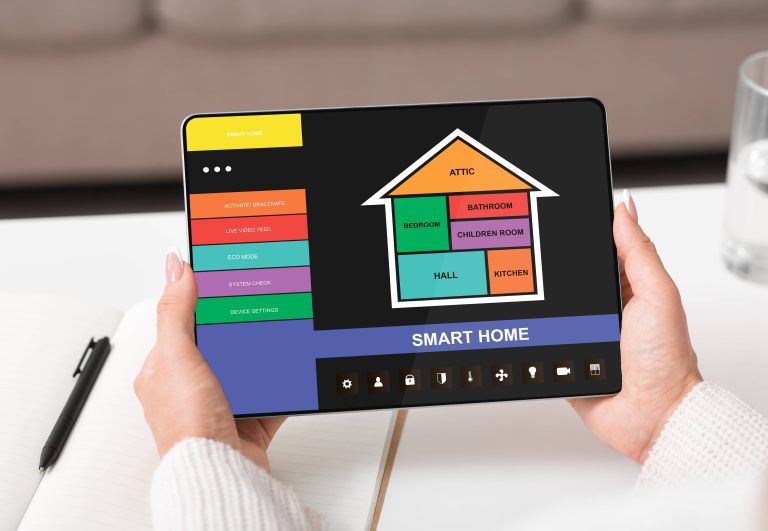![]()
In today’s world, where energy efficiency and sustainability are of paramount importance, smart home technology has emerged as a vital asset. Among the myriad of smart home tools, smart plugs play a crucial yet often understated role. These handy devices not only enhance the convenience of our daily lives but also significantly contribute to energy conservation and sustainability efforts. In this blog post, we will delve into the world of smart plugs and explore how they can help you track and reduce your energy usage.
What Are Smart Plugs?
Smart plugs are essentially Wi-Fi-enabled devices that fit between your electrical outlet and the appliance you want to control. They allow you to manage and monitor your appliances from your smartphone or tablet via a dedicated app. This means you can turn on/off your appliances remotely, schedule their operation, and, most importantly, track their energy consumption.
The Importance of Tracking Energy Usage
Efficient energy use is more than just a buzzword; it’s a necessity. Rising energy bills and environmental concerns make tracking and managing energy consumption pivotal. By understanding how much energy each appliance uses, you can make informed decisions that lead to reduced energy waste, lower electricity bills, and a smaller carbon footprint. Smart plugs facilitate this by offering detailed insights into energy consumption patterns.
How Smart Plugs Work
Smart plugs are straightforward to use. Here’s a step-by-step guide to getting started:
1. Plug It In: Insert the smart plug into any standard electrical outlet.
2. Connect to Wi-Fi: Use the smart plug’s app to connect it to your home Wi-Fi network.
3. Plugin Appliance: Plug your appliance into the smart plug.
4. Control and Monitor: Use the app to control the appliance and monitor its energy consumption.
Features of Smart Plugs
1. Remote Control: Turn your appliances on/off from anywhere using your smartphone.
2. Scheduling: Set schedules for appliances to turn on/off at specific times.
3. Energy Monitoring: View real-time energy usage and historical data to identify high-consuming devices.
4. Voice Control: Integrate with voice assistants like Amazon Alexa and Google Assistant for hands-free control.
5. Automation: Create scenarios and automate tasks based on your habits and routines.
The Benefits of Using Smart Plugs for Energy Tracking
1. Identify Energy Hogs: Smart plugs help you identify appliances that consume excessive energy. For instance, if you notice that your old refrigerator is using a disproportionate amount of electricity, it might be time to replace it with a more energy-efficient model.
2. Cost Savings: By monitoring and managing energy use, you can significantly reduce your electricity bills. Scheduling devices to turn off when not in use and eliminating standby power (phantom load) can lead to substantial savings.
3. Enhanced Convenience: Imagine waking up to freshly brewed coffee without needing to press a button or returning home to a perfectly climate-controlled environment. Smart plugs can make your life more comfortable and convenient.
4. Environmental Impact: By cutting down on wasted energy, you reduce your household’s carbon footprint, contributing to broader environmental benefits. Every kilowatt-hour saved means fewer greenhouse gases emitted.
Real-Life Applications
1. Home Offices: With the rise of remote work, home offices have become common. Smart plugs can help manage energy use of computers, printers, and other electronics. Set schedules to shut down devices at the end of the workday to save energy.
2. Kitchen: From coffee makers to slow cookers, smart plugs can control kitchen appliances, ensuring they only consume energy when necessary.
3. Entertainment Systems: Use smart plugs to turn off TVs, gaming consoles, and sound systems when not in use. This can prevent them from drawing standby power.
4. Holiday Decorations: Automate holiday lights to turn on in the evenings and off during the daytime, reducing unnecessary energy consumption.
Choosing the Right Smart Plug
When selecting a smart plug, consider the following factors:
1. Compatibility: Ensure the smart plug is compatible with your home’s Wi-Fi network and any smart home ecosystems (e.g., Amazon Alexa, Google Home) you might be using.
2. Energy Monitoring Accuracy: Look for smart plugs that provide detailed and accurate energy usage reports.
3. Scheduling Features: Opt for smart plugs that offer robust scheduling options to tailor energy usage to your routines.
4. Ease of Use: The app interface should be user-friendly, and the setup process should be straightforward.
Conclusion
Smart plugs are a simple yet effective tool for tracking and managing your energy usage. By offering insights into how much energy each appliance uses, they empower you to make informed decisions that can lead to significant cost savings and a reduction in your carbon footprint. In a world increasingly mindful of energy efficiency and sustainability, smart plugs represent a step towards smarter, greener living.
Investing in smart plugs not only enhances your home’s convenience but also plays a critical role in building a sustainable future. So, plug into the power of smart technology and start tracking your energy usage today!







